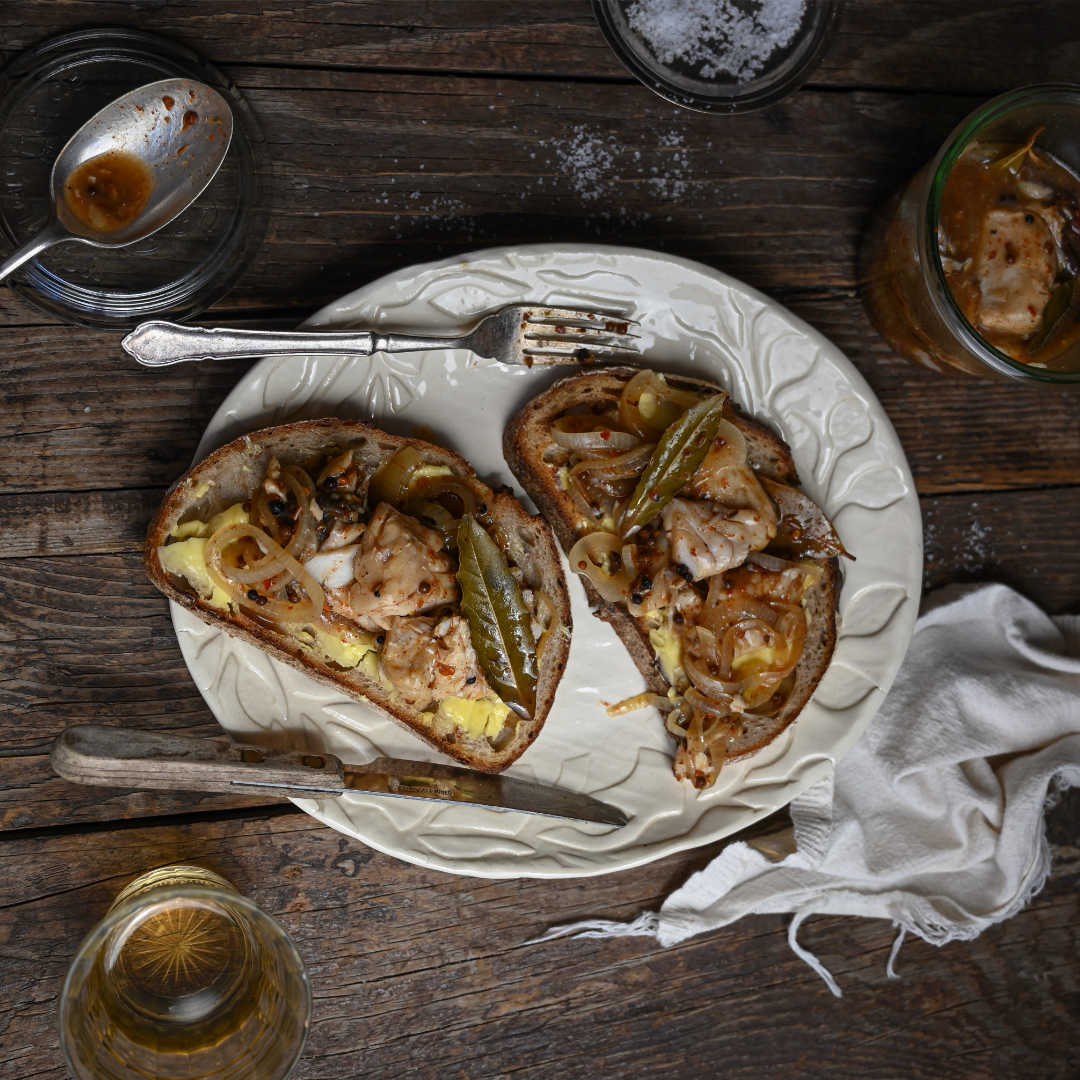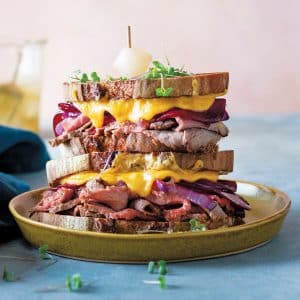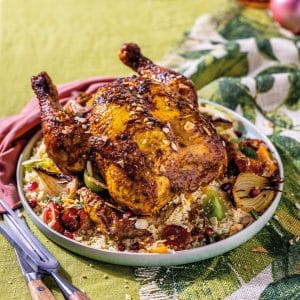Pickled fish, also known as curried fish, is as much a part of the South African Easter tradition as chocolate eggs and the Easter bunny, only this tradition goes back much further and remains a mystery to this day. One thing we can all agree on is that it is very popular in the Cape. Beyond that, slaan my met ‘n nat vis…
Some sources state that fishing boats used to not go out to sea over the Easter break, making the pickling of fish a necessity in the days before fridges. Whatever the tale, we love pickled fish!
It keeps for several days, doesn’t spoil easily and is an affordable addition to the Easter menu. One can dish pickled fish cold from the fridge – best served with a crunchy green salad and freshly baked bread or hot cross buns.
‘Breaking bread’ (and fish) together is a great opportunity to talk about our unique but vulnerable marine heritage and to make your own commitment to sustainable oceans.
The best local fish for your pickle
The best kind of fish is one that will be around for future generations to enjoy.
From local waters, it is sustainably caught hake. Chefs and home cooks count on Cape hake – dubbed the ‘Cinderella’ fish – for being simple to work with, reliably tasty and a great source of lean protein and Omega-3 fatty acids. When cooked just right, this deep-sea predator with pin-like teeth transforms into a subtly sweet fish, that yields small but beautifully firm flakes the colour of Hollywood teeth.
Celebrity chef Siba Mtongana agrees on the beauty of cooking with Cape hake: “Hake a reasonably inexpensive and definitely one of our best loved fishes. The great thing about hake is you can either go subtle or you can go all-out bold on the flavour profiles. I also love the fact that it has very few bones, which are easily removed, so I don’t need to worry when cooking hake for my children.”
For these reasons Cape hake is a popular everyday fish. It’s a fish that is as sustainable as it is delicious, which means that future generations will get to enjoy everyone’s favourite seafood.
The pioneering South African hake fishery became the first fishery in Africa – and first hake fishery in the world – to achieve MSC certification, which it has held since 2004. In November 2020, the Namibian hake fishery became the second wild-capture fishery in Africa to be certified as sustainable. By maintaining good practice these fisheries have not only safeguarded fish stocks and ensured that natural habitats are protected, they have also secured some 46,500 direct and indirect jobs and increased access to international markets.
Look for the blue MSC label when shopping for seafood
Make a commitment to buy MSC certified sustainable seafood when doing your Easter grocery shopping. So when you next visit your local supermarket just look for the little blue MSC label. This tells you the seafood comes from fisheries that have been certified to the MSC Fisheries Standard, a set of rigorous requirements for sustainable fishing.
Your action will have a huge impact on our oceans, which feed billions of people, cover over 70% of the planet and provide 80% of the world’s biodiversity.
Try this classic Easter pickled fish recipe
We’ve turned to one of the MSC’s Ocean Cookbook ambassadors, Georgia East based in Cape Town, to help us hero MSC certified hake and Cape Malay flavours for a local treat that is traditionally served at Easter.
Prep time: 30 mins. Pickling time: minimum 3 days. Serves: 8
You will need:
5kg MSC certified Cape hake, cleaned, filleted and cut into sections
Olive oil, for frying
4 onions, peeled and sliced into rings
3 cups white wine vinegar
1 cup water
½ cup of white sugar
4 bay leaves (fresh or dried)
1 tablespoon ground turmeric
1 tablespoon mild curry powder
1 tablespoon garam masala powder
1 tablespoon coriander seeds
1 tablespoon black peppercorns
2 heaped tablespoons cake flour
2 teaspoons salt
Method:
Fry the hake sections in olive oil until just cooked through. Season the fish with salt and pepper and set aside. Fry the onions in a little olive oil until just cooked – you want them to still have a crunch.
In a saucepan, combine the vinegar, water, sugar, bay leaves, spices, salt and peppercorns and simmer for 10 to 12 minutes. Use a little of the sauce combined with the flour to make a roux. Thicken the sauce and add in the fried onions.
Use boiling water to sterilise a few jars or one large container. Place the hake sections into the jars and spoon over the onions and sauce, taking care to entirely cover each piece of fish. Refrigerate the pickled fish and serve after a minimum of three days.
Serve the pickled fish cold from the refrigerator with a crunchy green salad and fresh brown bread or hot cross buns and butter. View the full recipe on the MSC recipes page here.
Fishing for the future: About the Marine Stewardship Council
For more than 20 years, the Marine Stewardship Council has connected fishers, businesses and consumers who care about the future of our oceans. The MSC is an international non-profit organisation which sets globally recognised, science-based standards for sustainable fishing and the seafood market. It is the only wild-capture fisheries certification and ecolabelling program that meets best practice requirements set by both the United Nations Food and Agriculture Organization (UNFAO) and ISEAL, the global membership association for sustainability standards. So when you buy seafood with the little blue MSC label on its pack, you’re helping to protect oceans, livelihoods and fish for the future. Visit www.msc.org.




